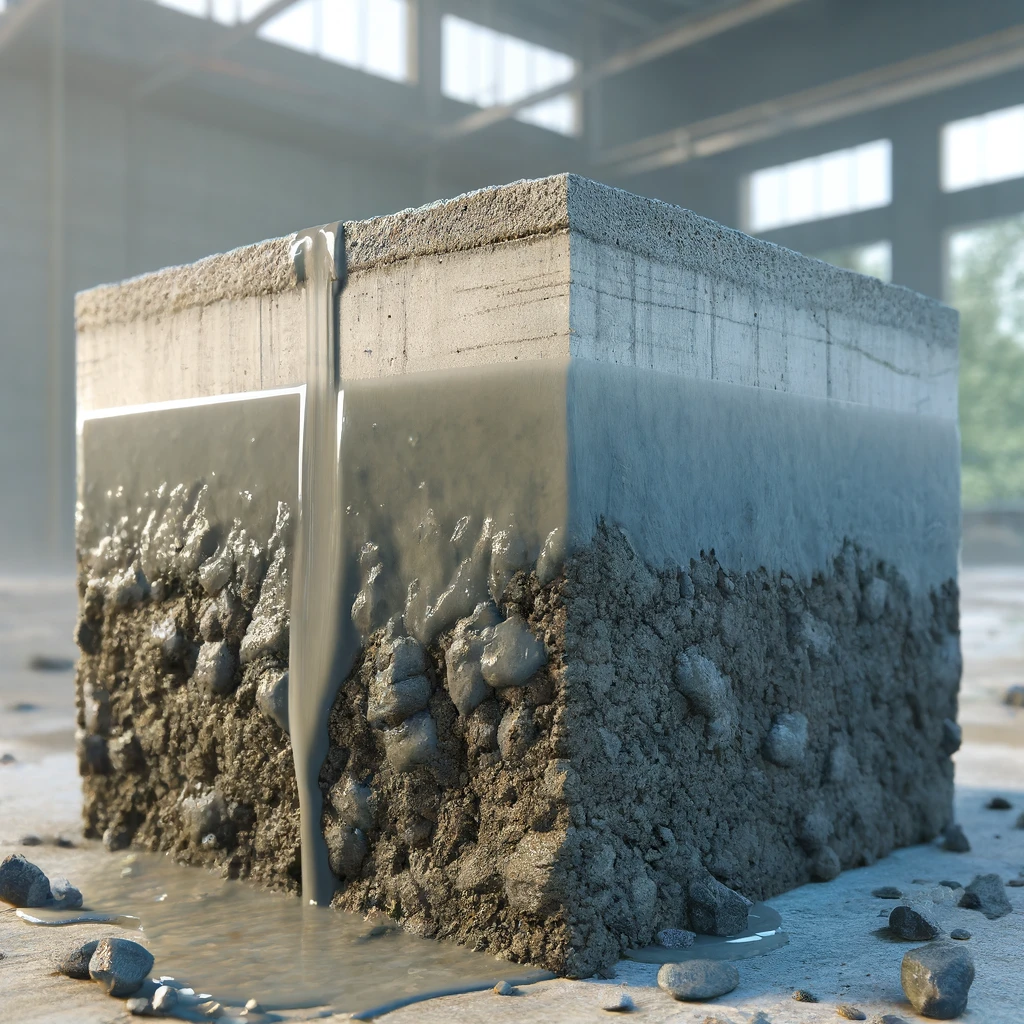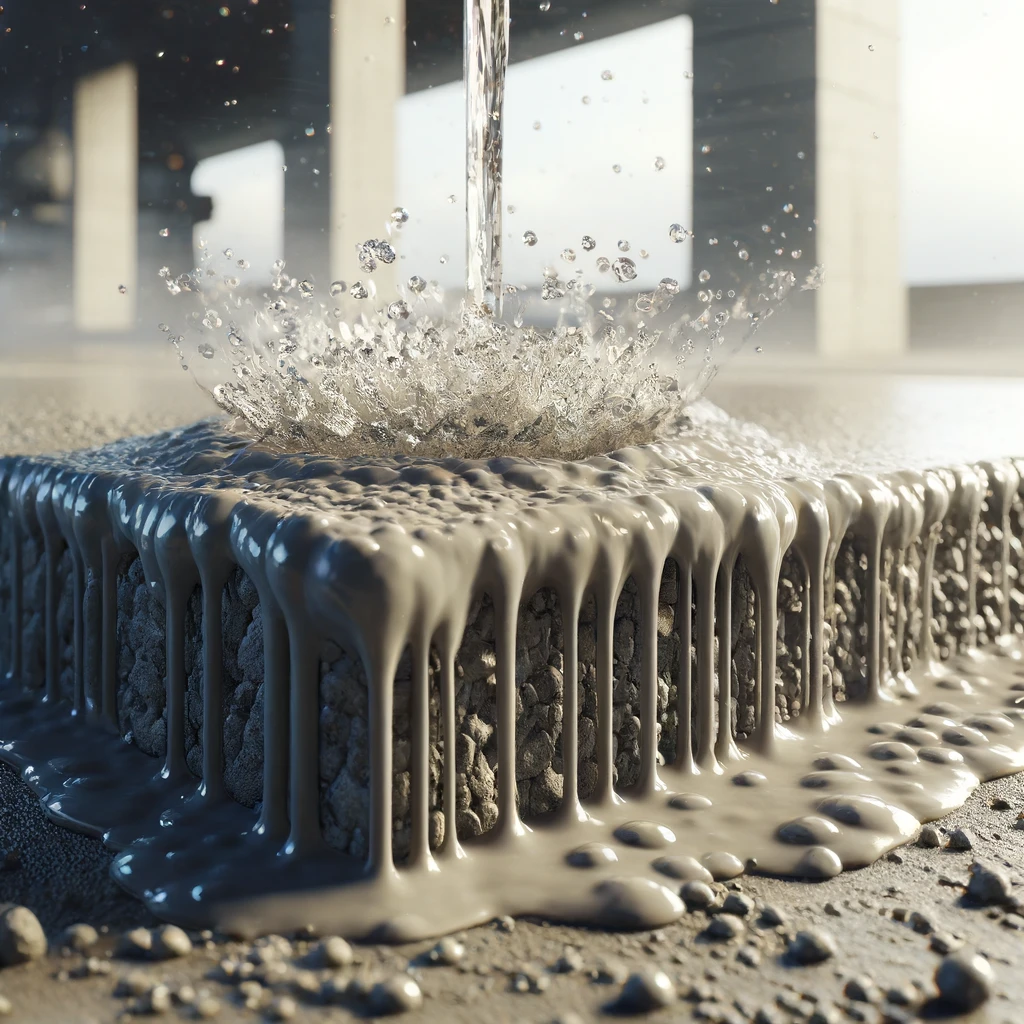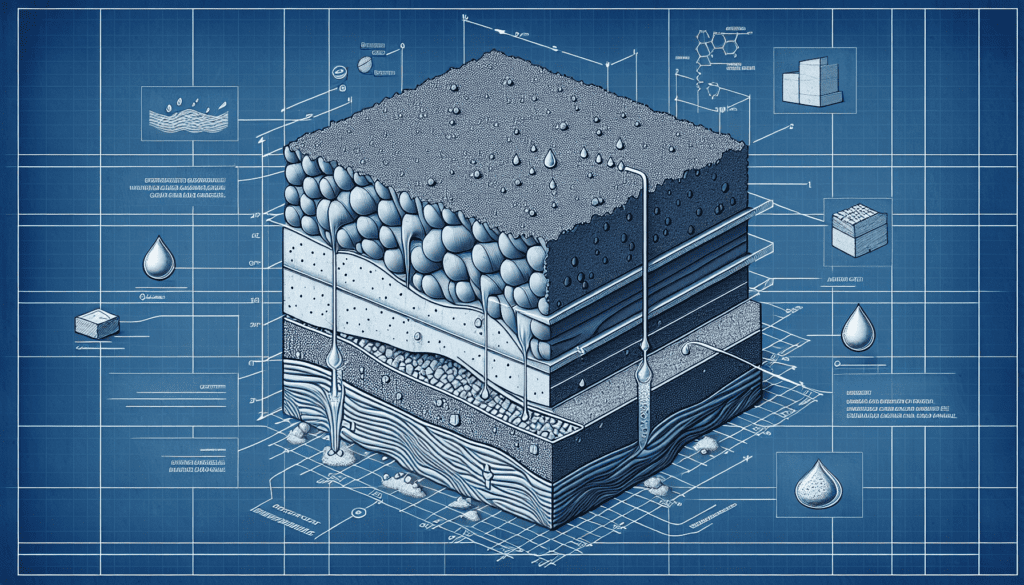Concrete Absorption Rate in Construction
Concrete absorption rate – perhaps a term unheard by many, but it’s a vital determinant in construction.
In simpler words, it reflects how much water a concrete variety can absorb.
High absorption rates spell doom for concrete, reducing its resistance and generating cracks.
This unassuming characteristic affects the choice of construction material to the longevity of a structure.
Keep reading and let’s soak up some knowledge.

Table of Contents
Understanding Concrete Absorption in Construction
Concrete absorption is a key term in the construction field that refers to the amount of water that concrete can absorb. It’s a factor that directly affects the durability, strength, and performance of concrete structures.
The Science: Concrete and Water Interaction
The interaction between concrete and water is a complex process. Here, we’ll simplify it and break it down into easy-to-understand concepts.
Hydrostatic Pressure and Capillary Action
Driven by what’s known as hydrostatic pressure and capillary action, water can penetrate concrete. Concrete pores can suck water like small straws, leading to saturation over time.
Water-Cement Ratio
The water-cement ratio (W/C) of a concrete mix directly correlates to its absorption rate. A higher W/C ratio means a more porous and absorptive concrete.
Importance of Understanding Concrete Absorption
Why exactly is understanding concrete absorption crucial in the construction field? We’ve listed some reasons below:
- Structural Integrity: High absorption rates can lead to compromised concrete strength and structure.
- Durability: Concrete with high absorption rates can deteriorate faster over time, affecting the structure’s lifespan.
- Finish Quality: High absorption can lead to discoloration, efflorescence, and other aesthetic issues.
Absorption Rate Standards
How do you know if your concrete has an acceptable absorption rate? Specific standards have been set to provide guidance.
| Type of Concrete | Absorption Rate (%) |
|---|---|
| Normal-weight concrete | 2-10 |
| Lightweight concrete | 5-20 |
*Note: The above rates are an approximation. Specific rates may vary based on concrete composition and environmental conditions.
Controlling Concrete Absorption
To deliver a well-constructed, durable structure, one must control concrete absorption. This can be achieved by implementing an optimal water-cement ratio, using quality aggregates, and employing adequate curing methods.
By truly understanding concrete absorption and how to manage it, you can significantly impact the quality and durability of your construction projects.
It’s a seemingly small detail that carries considerable weight in the longevity of a structure (source: CivilBlog.org).

The Influence of Concrete Absorption Rate on Material Choices
Why is Concrete Absorption Rate Important?
The significance of concrete absorption rate cannot be discounted as:
- It majorly impacts the concrete’s weathering resistance and durability.
- It is a key factor determining the concrete’s frost resistance.
- It affects the concrete’s resistance to de-icing chemicals.
Implications of Concrete Absorption Rates on Construction Material Choices
The implications of the absorption rates are vast-ranging, influencing the choice of construction materials in a number of ways.
Selection of Concrete Type
Concrete comes in many types, each with its own absorption rate. Therefore, the choice of concrete type to be utilized may heavily depend on the necessary absorption rate for the project [ConcreteConstruction.net].
Determining Admixture Requirement
Often admixtures are mixed with concrete to modify its properties. The absorption rate can influence the choice and quantity of these admixtures.
Influence on Other Construction Materials
Other construction materials used in conjunction with concrete must be compatible with its absorption rate to ensure durability and functionality.
| Concrete Type | Absorption Rate (%) | Common Usage |
|---|---|---|
| Regular Concrete | 7-9% | Used in majority of construction projects like buildings, bridges, etc. |
| Lightweight Concrete | 5-20% | Used in non-load bearing walls and thermal insulation |
| High Performance Concrete | <3% | Used in high-stress environments such as bridges and highways |
In conclusion, understanding the absorption rate of concrete is crucial in making informed choices about construction materials. It is a key consideration in the selection of the appropriate type of concrete, the required admixtures, and other material choices to ensure the sturdiness, durability, and reliability of the construction project.

Avoiding Excessive Concrete Absorption During Construction
Excessive absorption of water by concrete during construction can lead to numerous issues, jeopardising the structural integrity of the project.
The ideal solution is prevention, including adherence to best practices and accurate measurements, which increase the longevity and overall quality of the project.
Causes of Excessive Concrete Absorption
- Inadequate cement ratio: If there isn’t enough cement to bind the aggregate, the concrete mix can absorb excess water.
- Poor quality of materials: The quality of the cement, aggregate, and water used in a concrete mix can significantly affect its absorptive properties.
- Improper curing: Inadequate curing processes can lead to excessive absorption. The goal of curing is to keep the concrete damp to strengthen its bond.
Effective Strategies to Avoid Excessive Concrete Absorption
Avoiding excessive water absorption in concrete can be achieved by applying a few strategic approaches which guarantee the production of quality concrete mix and its proper application.
Proper Mix Design
Creating a balanced concrete mix design is essential. The mixture should have the correct proportions of water, cement, and aggregate. In general, a lower water-to-cement ratio leads to less absorption.
Precise Measurement
Exact measurement of materials creates a mix that resists excessive absorption. Measurement accuracy ensures that the concrete mix has the necessary proportions of each element.
Optimum Curing Process
The curing process should maintain ample moisture for the concrete to achieve its full strength and minimize excessive water absorption. Curing should be accurately timed to facilitate the requisite chemical reactions without the concrete drying out.
By understanding the causes of excessive concrete absorption and implementing the preventive measures mentioned above, it’s indeed possible to produce a strong, durable concrete structure.

Eco-Friendly Solutions for Concrete Absorption
As the world’s most widely used building material, concrete’s porous nature and its interaction with water can have significant ecological consequences.
However, innovative, green solutions are paving the way for a more sustainable approach to dealing with concrete absorption, ensuring our construction practices harmonize with the environment.
Harnessing the Power of Permeable Concrete
One of the most promising solutions in eco-friendly construction is the use of permeable concrete. Unlike traditional concrete, permeable concrete allows water to pass through it, reducing runoff and enhancing groundwater recharge.
This innovative material is not only effective in managing stormwater but also in reducing the heat island effect in urban areas, contributing to cooler city environments.
Integrating Pervious Pavements in Urban Design
Pervious pavements, made from porous materials like permeable concrete, offer a dual solution: they support efficient water absorption and promote natural filtration.
- By incorporating pervious pavements in urban landscapes, cities can combat the challenges of water runoff, flooding, and pollution, leading to healthier urban ecosystems and improved water quality.
Advancing with Water-Reducing Admixtures
The concrete production process itself can be made more environmentally friendly by incorporating water-reducing admixtures. These substances decrease the water content needed in the concrete mix, enhancing its strength and durability while minimizing water usage.
- By reducing the water-to-cement ratio, these admixtures contribute to lower carbon emissions and energy consumption in concrete production.
Exploring the Potential of Green Roofs
Green roofs represent a creative and effective way to mitigate concrete absorption issues, especially in urban settings.
- By covering concrete surfaces with vegetation, green roofs absorb rainwater, provide insulation, and contribute to biodiversity. This not only addresses the problem of water absorption but also transforms concrete structures into active participants in urban ecology.
Implementing Rainwater Harvesting Systems
Combining concrete structures with rainwater harvesting systems offers a practical solution to manage water absorption and usage.
- By collecting and storing rainwater from concrete surfaces, these systems reduce runoff, alleviate pressure on urban drainage, and provide an alternative water source for non-potable uses, such as irrigation and flushing toilets.
Committing to Regular Maintenance and Sealing
Regular maintenance and sealing of concrete surfaces extend their lifespan and enhance their ecological performance.
- Applying eco-friendly sealers can prevent excessive water absorption, reduce the risk of damage, and limit the need for frequent repairs or replacements, resulting in a more sustainable lifecycle for concrete structures.

Conclusion on Concrete Absorption
In our exploration of the influence of concrete absorption rate on construction material choices, we’ve found that this attribute indeed acts as a linchpin in the construction industry.
The absorption rate is intrinsic in choosing the right type of concrete, determining the quantity and type of admixtures necessary, and ensuring compatibility with other building materials.
From our perspective, the foundational understanding of concrete absorption rates fosters an increased ability to predict and plan for the durability and resistance of a concrete structure. Ultimately, the wisdom in knowing and comprehending this property correlates directly with the strength and longevity of our constructions.






